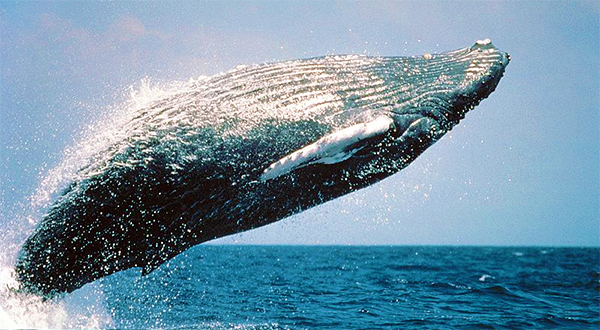A team of marine biologists and technologists were funded a $1.5 million grant by the Benioff Ocean Initiative, in order to create a system which will detect endangered blue whales, by utilizing acoustic and thermal sensors which will alert nearby vessels.
The detection system will try to minimize the collisions occurred between ships and blue whales in the Santa Barbara Channel, California. A spot where many whales have been killed and inured.
The current detection system, WhaleWatch, estimates roughly the position of the whales and produces possible collision reports within 6-mile (25km) grids.
In order to improve the existing system, Mark Baumgartner, a marine ecologist at the Woods Hole Oceanographic Institution in Massachusetts, helped design a better detection system that will record underwater tonal sounds and send a recording to an analyst who will check the different songs produced by different whale species and if the right whale song is identified, the analyst will notify nearby ships via Twitter, text or email.
Now, Mark Baumgartner is trying to adapt the system to detect blue whales. In order for that to happen an update to the call library is necessary to include information about blue whales, he notes. He added that the system is very accurate and can be adapted to the Santa Barbara Channel.
Elliot Hazen, assistant adjunct professor of ecology and evolutionary biology at the University of California, Santa Cruz, explained that the team is trying to modify the system in order to achieve a better resolution of daily updates and a grid of 10km.
The system will use hydrophone in specific spots, said Ana Sirovic, a marine bio-acoustician with the University of California, San Diego’s Scripps Institution of Oceanography. The acoustic tools will be accompanied with at least two thermal imaging cameras which will detect when a whale surfaces in order to breathe, according to Woods Hole researcher, Daniel Zitterbart.
It is underlined however by experts that, the detection system will not be effective unless the captains slow their vessel’s speed. The speed limit will be used in a number of “seasonal management areas” between Florida and Cape Cod, where collisions between ships and right whales is a major threat to the animals.

































































